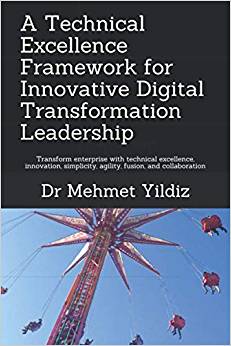
The primary purpose of this book is to provide valuable insights for digital transformational leadership empowered by technical excellence by using a pragmatic five-pillar framework. This empowering framework aims to help the reader understand the common characteristics of technical and technology leaders in a structured way. Even though there are different types of leaders in broad-spectrum engaging in digital transformations, in this book, we only concentrate on excellent technical and technology leaders having digital transformation goals to deal with technological disruptions and robust capabilities to create new revenue streams. No matter whether these leaders may hold formal executive titles or just domain specialist titles, they demonstrate vital characteristics of excellent technical leadership capabilities enabling them to lead complex and complicated digital transformation initiatives.The primary reason we need to understand technical excellence and required capabilities for digital transformational leadership in a structured context is to model their attributes and transfer the well-known characteristics to the aspiring leaders and the next generations. We can transfer our understanding of these capabilities at an individual level and apply them to our day to day activities. We can even turn them into useful habits to excel in our professional goals. Alternatively, we can pass this information to other people that we are responsible for, such as our teenagers aiming for digital leadership roles, tertiary students, mentees, and colleagues.We attempt to define the roles of strategic technical and technology leaders using a specific framework, based on innovation, simplicity, agility, collaboration, fusion and technical excellence. This framework offers a common understanding of the critical factors of the leader. The structured analysis presented in this book can be valuable to understand the contribution of technical leaders clearly. Admittedly, this book has a bias towards the positive attributes of excellent leaders on purpose. The compelling reason for this bias is to focus on the positive aspects and describe these attributes concisely in an adequate amount to grasp the topic so that these positive attributes can be reused and modelled by the aspiring leaders. As the other side of the coin is also essential for different insights, I plan to deal with the detrimental aspects of useless leaders in a separate book, perhaps under the lessons learned context considering different use cases for a different audience type. Consequently, I excluded the negative aspects of useless leaders in this book.
Genre: BUSINESS & ECONOMICS / E-Commerce / GeneralThe book was published last month. It already started picking up with good sale in Amazon.
The primary purpose of this book is to provide valuable insights for digital transformational leadership empowered by technical excellence by using a pragmatic five-pillar framework. This empowering framework aims to help the reader understand the common characteristics of technical and technology leaders in a structured way.
Even though there are different types of leaders in broad-spectrum engaging in digital transformations, in this book, we only concentrate on excellent technical and technology leaders having digital transformation goals to deal with technological disruptions and robust capabilities to create new revenue streams. No matter whether these leaders may hold formal executive titles or just domain specialist titles, they demonstrate vital characteristics of excellent technical leadership capabilities enabling them to lead complex and complicated digital transformation initiatives.
The primary reason we need to understand technical excellence and required capabilities for digital transformational leadership in a structured context is to model their attributes and transfer the well-known characteristics to the aspiring leaders and the next generations. We can transfer our understanding of these capabilities at an individual level and apply them to our day to day activities. We can even turn them into useful habits to excel in our professional goals. Alternatively, we can pass this information to other people that we are responsible for, such as our teenagers aiming for digital leadership roles, tertiary students, mentees, and colleagues.